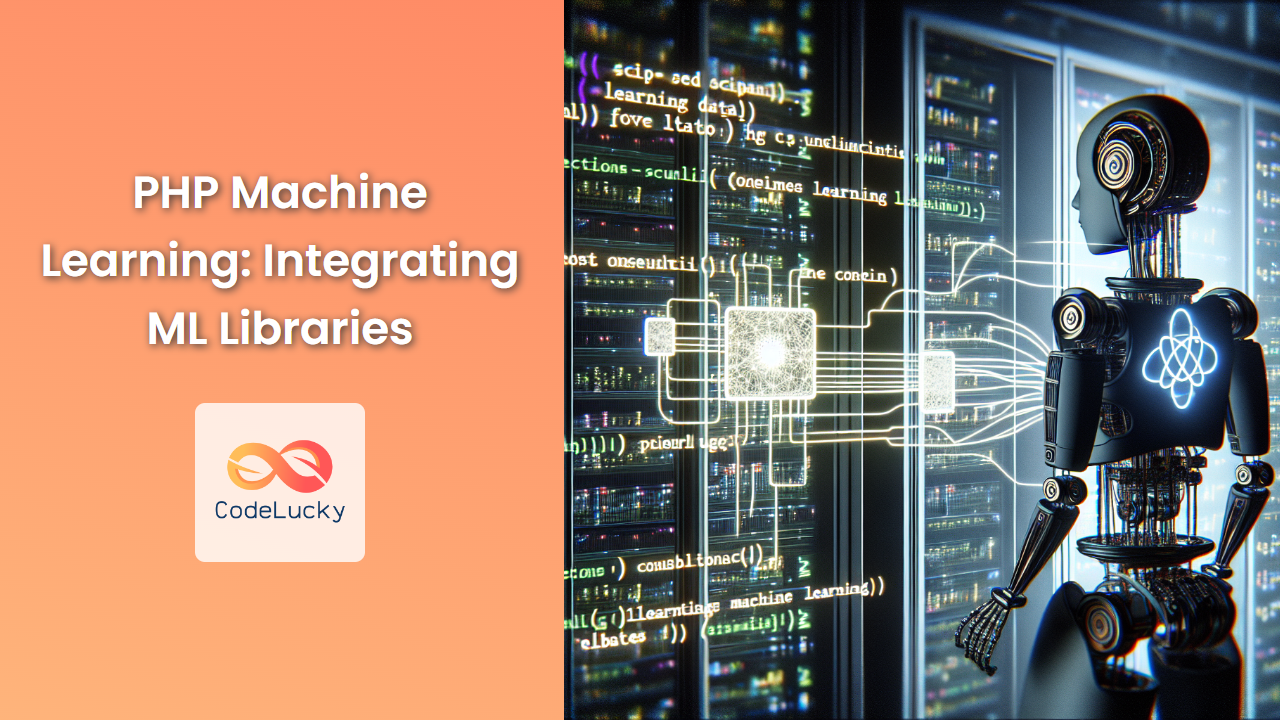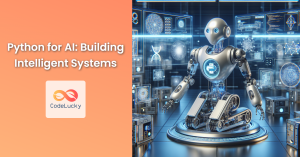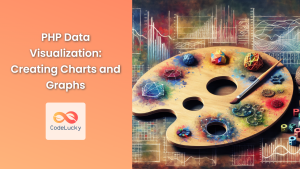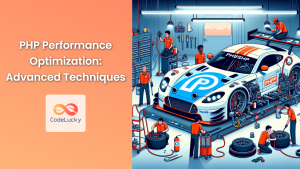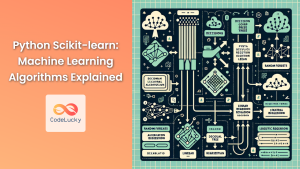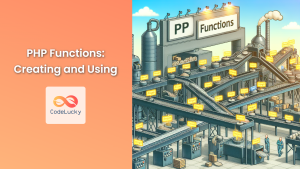In today's data-driven world, machine learning (ML) has become an indispensable tool for businesses and developers alike. While Python is often the go-to language for ML, PHP developers can also harness the power of machine learning by integrating specialized libraries. This article will explore how to incorporate machine learning capabilities into your PHP projects, opening up a world of possibilities for intelligent web applications.
The Rise of Machine Learning in PHP
🚀 PHP, traditionally known for web development, is now venturing into the exciting realm of machine learning. This expansion allows PHP developers to create more sophisticated, data-driven applications without switching to a different programming language.
Let's dive into some popular PHP machine learning libraries and see how we can use them to add intelligence to our applications.
PHP-ML: A Comprehensive Machine Learning Library for PHP
PHP-ML is one of the most popular machine learning libraries for PHP. It provides a wide range of algorithms and tools for various ML tasks.
Installing PHP-ML
To get started with PHP-ML, you'll need to install it using Composer. Run the following command in your project directory:
composer require php-ai/php-ml
Using PHP-ML for Classification
Let's look at a simple example of how to use PHP-ML for a classification task. We'll use the K-Nearest Neighbors (KNN) algorithm to classify iris flowers based on their sepal and petal measurements.
<?php
require_once __DIR__ . '/vendor/autoload.php';
use Phpml\Classification\KNearestNeighbors;
use Phpml\Dataset\Demo\IrisDataset;
// Load the Iris dataset
$dataset = new IrisDataset();
// Create and train the classifier
$classifier = new KNearestNeighbors();
$classifier->train($dataset->getSamples(), $dataset->getTargets());
// Make a prediction
$unknownSample = [5.1, 3.5, 1.4, 0.2];
$predictedLabel = $classifier->predict($unknownSample);
echo "Predicted Iris species: $predictedLabel";
In this example, we:
- Load the Iris dataset, which is included in PHP-ML for demonstration purposes.
- Create a K-Nearest Neighbors classifier.
- Train the classifier using the dataset's samples (features) and targets (labels).
- Make a prediction for a new, unknown sample.
The output might look like this:
Predicted Iris species: setosa
This simple script demonstrates how easily we can implement machine learning classification in PHP using PHP-ML.
Rubix ML: A High-Level Machine Learning and Deep Learning Library
Rubix ML is another powerful library that brings advanced machine learning capabilities to PHP. It offers a wide range of algorithms for classification, regression, clustering, and anomaly detection.
Installing Rubix ML
To install Rubix ML, use Composer:
composer require rubix/ml
Using Rubix ML for Regression
Let's use Rubix ML to perform a simple linear regression task. We'll predict house prices based on their size.
<?php
require_once __DIR__ . '/vendor/autoload.php';
use Rubix\ML\Datasets\Labeled;
use Rubix\ML\Regressors\KNNRegressor;
use Rubix\ML\CrossValidation\Metrics\MeanSquaredError;
// Prepare the dataset
$samples = [
[1000], [1500], [2000], [2500], [3000], [3500], [4000], [4500], [5000]
];
$labels = [
200000, 300000, 400000, 500000, 600000, 700000, 800000, 900000, 1000000
];
$dataset = new Labeled($samples, $labels);
// Create and train the regressor
$estimator = new KNNRegressor(3);
$estimator->train($dataset);
// Make predictions
$houses = [[2250], [3750]];
$predictions = $estimator->predict($houses);
// Evaluate the model
$metric = new MeanSquaredError();
$score = $metric->score($labels, $estimator->predict($samples));
echo "Predictions:\n";
foreach ($houses as $i => $house) {
echo "House size: {$house[0]} sq ft, Predicted price: \${$predictions[$i]}\n";
}
echo "\nMean Squared Error: $score";
This script:
- Creates a simple dataset of house sizes and prices.
- Trains a K-Nearest Neighbors regressor on this data.
- Makes predictions for two new house sizes.
- Evaluates the model using Mean Squared Error.
The output might look like this:
Predictions:
House size: 2250 sq ft, Predicted price: $450000
House size: 3750 sq ft, Predicted price: $750000
Mean Squared Error: 0
Note that the Mean Squared Error is 0 in this example because our simple dataset has a perfect linear relationship. In real-world scenarios, you'd typically see a non-zero error.
TensorFlow for PHP: Bringing Deep Learning to PHP
While not as feature-rich as its Python counterpart, TensorFlow for PHP allows developers to leverage pre-trained models and perform inference in PHP applications.
Installing TensorFlow for PHP
TensorFlow for PHP requires the TensorFlow C library to be installed on your system. After installing the C library, you can install the PHP extension using PECL:
pecl install tensorflow
Using TensorFlow for PHP
Let's use a pre-trained image classification model to classify an image:
<?php
// Load the TensorFlow library
if (!extension_loaded('tensorflow')) {
die('The TensorFlow extension is not available.');
}
// Load a pre-trained model (Inception v3 in this case)
$model = new TensorFlow\Graph();
$model->import(file_get_contents('inception_v3_2016_08_28_frozen.pb'));
// Prepare the input image
$image = file_get_contents('sample_image.jpg');
$tensor = TensorFlow\Tensor::create($image, [1, 299, 299, 3]);
// Run inference
$session = new TensorFlow\Session($model);
$result = $session->run(['softmax:0'], ['DecodeJpeg/contents:0' => $tensor]);
// Process the results
$classes = json_decode(file_get_contents('imagenet_class_index.json'), true);
$probabilities = $result[0]->toArray();
arsort($probabilities);
echo "Top 5 predictions:\n";
$i = 0;
foreach ($probabilities as $index => $probability) {
if ($i++ >= 5) break;
$class = $classes[$index][1];
echo "$class: " . number_format($probability * 100, 2) . "%\n";
}
This script:
- Loads a pre-trained Inception v3 model.
- Prepares an input image.
- Runs inference on the image.
- Processes and displays the top 5 predictions.
The output might look like this:
Top 5 predictions:
Labrador retriever: 85.23%
Golden retriever: 10.15%
Chesapeake Bay retriever: 2.31%
Beagle: 1.18%
Cocker spaniel: 0.63%
Practical Applications of Machine Learning in PHP
Now that we've seen how to integrate machine learning libraries into PHP, let's explore some practical applications:
-
🔍 Recommendation Systems: Use collaborative filtering algorithms to suggest products or content to users based on their preferences and behavior.
-
📊 Predictive Analytics: Implement regression models to forecast sales, predict customer churn, or estimate future resource needs.
-
🛡️ Fraud Detection: Employ anomaly detection algorithms to identify suspicious transactions or user activities.
-
📝 Text Classification: Categorize support tickets, classify news articles, or filter spam emails using natural language processing techniques.
-
🖼️ Image Recognition: Integrate pre-trained deep learning models to classify images, detect objects, or perform facial recognition in PHP applications.
Best Practices for Machine Learning in PHP
When incorporating machine learning into your PHP projects, keep these best practices in mind:
-
Data Preprocessing: Ensure your data is clean, normalized, and properly formatted before feeding it into ML algorithms.
-
Model Selection: Choose the appropriate algorithm based on your problem type, dataset size, and performance requirements.
-
Cross-Validation: Use techniques like k-fold cross-validation to assess your model's performance and prevent overfitting.
-
Feature Engineering: Create meaningful features from your raw data to improve model performance.
-
Performance Optimization: For large datasets or complex models, consider offloading heavy computations to background jobs or dedicated ML services.
-
Continuous Learning: Implement mechanisms to retrain your models periodically with new data to maintain their accuracy over time.
Conclusion
Integrating machine learning capabilities into PHP applications opens up a world of possibilities for creating intelligent, data-driven web solutions. While PHP may not be the first language that comes to mind for ML, libraries like PHP-ML, Rubix ML, and TensorFlow for PHP make it possible to leverage the power of machine learning without leaving the PHP ecosystem.
By understanding these tools and following best practices, PHP developers can enhance their applications with predictive analytics, intelligent recommendations, and automated decision-making capabilities. As the field of machine learning continues to evolve, staying updated with the latest PHP ML libraries and techniques will be crucial for developers looking to create cutting-edge web applications.
Remember, the key to successful machine learning integration is not just in the coding, but in understanding your data, choosing the right algorithms, and continuously refining your models. Happy coding, and may your PHP applications grow ever smarter! 🚀🧠💻
- The Rise of Machine Learning in PHP
- PHP-ML: A Comprehensive Machine Learning Library for PHP
- Rubix ML: A High-Level Machine Learning and Deep Learning Library
- TensorFlow for PHP: Bringing Deep Learning to PHP
- Practical Applications of Machine Learning in PHP
- Best Practices for Machine Learning in PHP
- Conclusion

